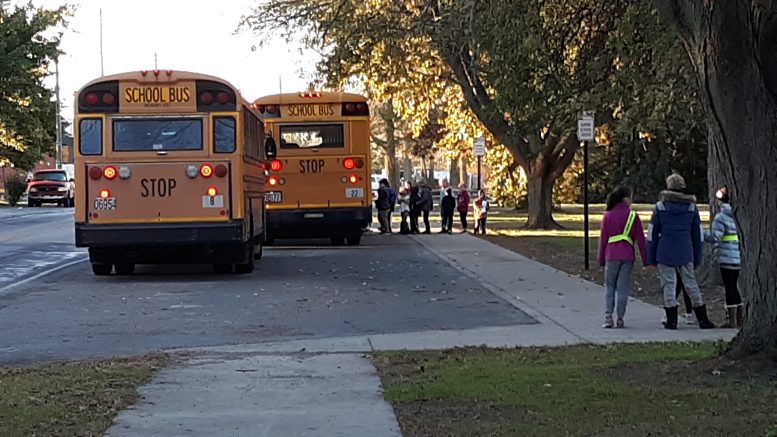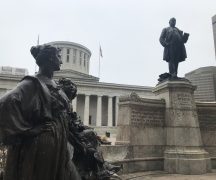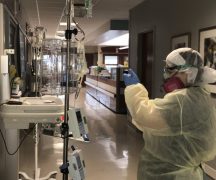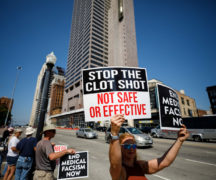It didn’t seem right that schools and parents are somehow expected to shoulder the staggering responsibility of deciding whether to return kids to the classroom amid a raging, unpredictable pandemic.
Is it safe to repopulate schools? How do we know?
State and federal health agencies have churned out back-to-school guidelines that failed to address those fundamental questions.
Fortunately, as President Donald Trump continues to pressure schools to reopen, experts are stepping up to give schools, local health officials and parents the framework needed to assess risks and make decisions.
It’s become clear that schools, first of all, should reopen only when community spread of coronavirus is in check. The country at large is not even close to the mark.
Second, there are easy-to-understand measures to determine whether community spread is under control. Local infection rates — how many new cases occur daily per 100,000 people in a given area — is a favored measure. These metrics should drive decisions, not politicians, anxious parents or under-the-gun school officials.
Third, the framework puts responsibility for reopening schools where it belongs — on elected leaders, health officials and the public to bring cases under control.
Epidemiologist Dr. Ali Khan and colleagues at the University of Nebraska recently published guidance that includes a color-coded scale of risk levels for schools. The guidelines recommend schools start the year with remote learning in areas averaging more than five new cases a day per 100,000 population. Anything above five would indicate uncontrolled spread that endangers students and staff.
As I write this, Ohio is averaging more than 11 new cases a day per 100,000 population. Nine states are averaging 30 or more.
Khan, dean of the university’s public health college, was director of the Office of Public Health Preparedness and Response at the Centers for Disease Control and Prevention from 2010 to 2014. He told me the surge of cases across the country is an unprecedented public health failure that asserts undue pressure on schools.
“There’s continuing blame-shifting for this failure,” he said in a phone interview. “If kids don’t go back to school, it’s the parents’ fault or the teachers’ fault. No, it’s the elected leaders’ fault.
“We all want our kids to go back to school,” Khan said. “I’m a pediatrician. I understand the importance of kids going back to school. So, make public health and elected officials get cases down so we can send our kids back safely.”
The burden should not be on schools or parents to make life and death choices around a contagious virus that we have no experience managing in a school setting. Other countries understand this. Khan reviewed transmission rates in 15 countries that reopened schools. He found most had driven down rates below one case a day per 100,000 population.
That’s one case per 100,000. The U.S. daily rate is about 20 times that.
These countries were able to knock down infection rates with tough control measures like shutdowns and universal mask wearing. That’s the only way to bring case numbers down to safe levels for schools to reopen, experts wrote in The New England Journal of Medicine last week.
Schools have spent months on logistical considerations, prevention and mitigation efforts, but they can only go so far.
“These efforts are not going to prevent school-based transmission if you don’t get cases down in the community,” Khan said.
More schools are seeing the light and deciding to begin the year with all remote learning. Where I live In Northeast Ohio, public health agencies are starting to take a stand as well. A public health officer for my county told me in late July her agency was not advising schools on whether to reopen. Two days later, the agency was recommending schools start remotely and cancel extracurricular activities. It cited a tripling of average daily cases between mid-June and mid-July; increasing hospitalizations and limited capacity to test children for COVID-19.
The country failed its children. The failure keeps parents up at night, worrying about their kids’ education and well-being; day care issues, jobs, the economy and family health.
“If we would have made schools a priority, we could have done this,” said Daniel Skinner, a health policy professor at Ohio University. “These school districts are doing the best they can. We handed them the most terrible hand to play.”
Harlan Spector is a Northeast Ohio writer focused on health care and other topics. He has decades of journalism experience as a former Cleveland Plain Dealer editor and enterprise reporter who covered health and medicine, government, social services, education and other areas. Follow Harlan on Twitter @harspector.
***
Also from Ohio Capital Journal:
Ohio’s universities require pledges of personal responsibility to slow virus spread
As the school year swiftly approaches, Ohio’s universities are making a last-ditch effort to curb the spread of coronavirus by requiring students, and in some cases faculty, to sign personal pledges.
The Ohio State University, Ohio University, Miami University, the University of Cincinnati and Kent State University are requiring students sign “pledges” — as dubbed by many schools — before returning to campus. Failure to sign these pledges may result in disciplinary actions by select schools. READ MORE





